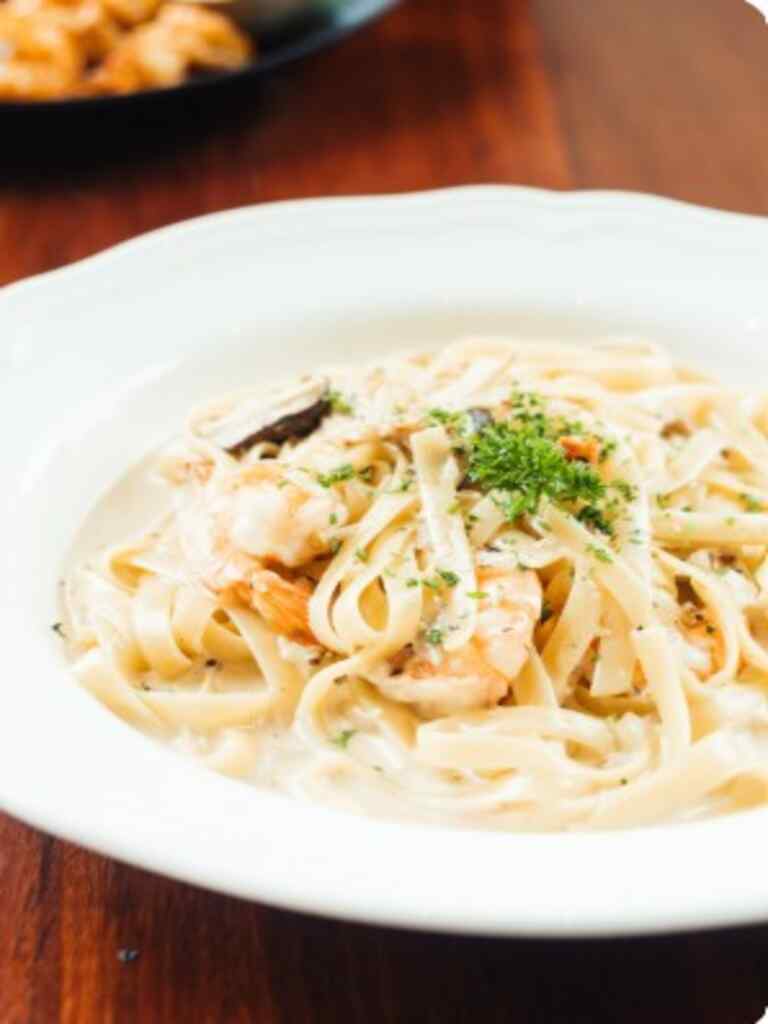Carbonara is one of Italy’s most famous pasta dishes, known for its creamy, silky texture and bold, savory flavor. Traditionally, it’s made with just a few simple ingredients: pasta, guanciale (cured pork cheek), eggs, Pecorino Romano cheese, and black pepper.
When combined, these ingredients create a luscious sauce without the need for cream—just the richness of egg yolks and cheese binding perfectly to the pasta.
The dish is celebrated for its balance: salty guanciale, sharp Pecorino, peppery spice, and the comforting heartiness of pasta. It’s deceptively simple, yet deeply satisfying, making it a staple of Roman cuisine and a global favorite.
Must Read: Crispy & Flavorful: How to Make Authentic Israeli Falafel

Classic Italian Carbonara: Creamy Pasta with a Roman Touch
Description
Carbonara is one of Italy’s most famous pasta dishes, known for its creamy, silky texture and bold, savory flavor.
Background and Origin
The origins of Carbonara are both fascinating and debated. It is generally agreed that the dish comes from Rome and the Lazio region of Italy, but its exact creation story has multiple theories:
- Post–World War II Influence (1940s): The most popular theory suggests that Carbonara emerged after World War II, when American soldiers stationed in Italy shared their rations of bacon and powdered eggs with locals. Italian cooks combined these with pasta and local cheese, creating the foundations of the dish we know today.
- Coal Miners’ Dish Theory: Another explanation ties Carbonara to Italian coal miners (carbonara means “charcoal burner” in Italian). According to this theory, miners made a simple, hearty pasta with eggs, cured pork, and cheese while working, with the black pepper symbolizing specks of coal.
- Evolution of Roman Cuisine: Some food historians argue that Carbonara is simply an evolution of older Roman dishes, which often used pork fat, cheese, and pasta together, refined over time into the classic recipe.
Despite its debated origins, Carbonara rose to prominence in the mid-20th century and quickly spread worldwide. Today, it is one of the most internationally recognized Italian pasta dishes, though purists emphasize sticking to the authentic recipe—no cream, no garlic, and always guanciale over bacon.
Ingredients
Instructions
-
How to Prepare Classic Creamy Italian Carbonara
- Boil some water in a cooking pot. Add some salt once the water is boiling.
- Quickly add the pasta and boil for only 5 minutes. Ensure not to break the pasta. You can hold onto the pasta in the pot until it softens and is fully submerged in the boiling water.
- Chop the guanciale into small pieces and set them aside.
- Grate about 75 g of pecorino cheese into a bowl of 3 egg yolks. Whisk this mixture with a fork.
- In a frying pan, add the chopped guanciale and toast over medium heat.
- Once the guanciale produces enough oil from the toast, scoop out the pasta from the boiling water and slowly add it.
- Allow it to simmer for a minute, then add a ladle of hot water. Once it begins to boil, take the pan off the heat and let it cool for 30 seconds, then add the mixture of egg yolk. As you mix the ingredients, you’ll notice the yolk mixture turns creamy. Put the pan back on the heat at this point.
- Continue to stir the carbonara for a minute.
- Turn off the heat and serve the carbonara on a plate. Sprinkle some grated pecorino on the pasta.
- Sprinkle a little bit of salt and black pepper.
- Yummy! Your classic creamy Italian carbonara is ready!
Video credit: Citalia–YouTube
Note
Tips for Preparing Italian Carbonara
- Use any bacon if you don’t have guanciale or pork cheek. Remember, the pork cheek is a traditional ingredient in the original Italian carbonara.
- You can also use pancetta as an alternative to guanciale, which is less fatty.
- Some people use the white part of fresh eggs in addition to the yolk, but it will not give you much cream.
Read Also: Why Poutine is a Must-Try Dish for Visitors to Canada
Classic Italian Carbonara is more than just pasta—it’s a timeless symbol of Roman culinary tradition, showcasing how simplicity and quality ingredients can create extraordinary flavor. Every forkful carries history, comfort, and the essence of Italy’s passion for food.

